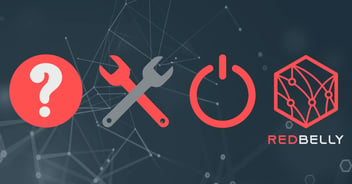Everyday, our lives are impacted by our interactions with regulated financial relationships. Our employment, superannuation, insurance, energy, telecommunications, investments, mortgages, and rental agreements are just a few that we interact with all the time.
These financial relationships are increasingly being organised and run in unfair ways that imbed information asymmetry amongst the transacting parties. This is a problem, because information asymmetry:
- Reduces transparency - you have no choice but to trust those with whom you transact
- Silos data - severing the user from their data and its potential
- Incentivises monopolies - reducing competition and artificially inflating prices
Additionally, financial relationships are often organised using outdated, inefficient infrastructure which:
- Costs excessive time and money to run, using manual processes with large administrative overheads
- Is duplicated redundantly across organisations, imbedding unnecessary cost and risk into products and services
- Requires an expensive ‘trust stack’ to ensure compliance and accountability throughout the relationship (e.g. audit)

It doesn’t have to be this way.
In this series, I’ll be exploring a better way to organise our financial relationships. One which leverages distributed ledger technology (DLT) to increase efficiency, eliminate information asymmetry, and unlock a new frontier of innovation.
So, how can DLT help us to build better, fairer, and more efficient financial relationships?
DLT allows us to cheaply and efficiently program business logic without having to rely on our counterparties to run the code. The relationship mechanics (what the legal profession might call the ‘performance’ of the rights and obligations defined by a legal contract) are self-executing, and this is done on shared infrastructure that neither counterparty has to run. Thus, the cost to run the relationship is reduced because the amount of work required to facilitate and manage the relationship reduces.
If the financial relationship can be defined as a template, it can be easily replicated and run on the shared infrastructure. The marginal cost (the cost of producing another ‘unit’ or instance of the relationship) drops towards zero, making it almost free to run, requiring only the small, necessary compute and storage costs.
As long as this technology is commoditised, shared fairly and made accessible to all, no one can monopolise it because everyone has equal access. All competitors in a market can have access to the same near zero marginal cost infrastructure to automate key parts of their products or services. This should put downward pressure on prices and force them to compete on value propositions other than price.In addition, because of its shared nature and properties of immutability and auditability, DLT helps to level the playing field by empowering all parties with full and equal knowledge of the mechanics of the financial relationship. This ensures transparency, strengthens the agency the user has over their data, and removes the need to have to trust the counterparty to do what they are supposed to do.
But... you don’t need DLT to automate business logic.
Now, a crucial point to emphasise here is that you don’t need DLT to automate business logic. Traditional Web2.0 technologies are often used by businesses to create an internal automated workflow of a broken process. There are several disadvantages to this approach. Firstly, it can be incredibly expensive to build and run your own solution. This creates a barrier to entry for smaller, challenger brands to take on established monopolies or dominant market players and although SaaS providers have made some headway at lowering this barrier to entry, you still have to pay, rely, and trust a third party intermediary to facilitate key business processes.
On the other hand, with a DLT based solution the marginal cost can be lowered much further as you are only paying the raw compute and storage costs and not additional margin to a profit seeking enterprise. Furthermore, because DLT allows you to program the mechanics of a financial relationship, they will be compliant by default which greatly reduces the cost of an organisation’s ‘trust stack.’

Web2.0 based solution is always going to exist
Secondly, a Web2.0 based solution is always going to exist in isolation from other products or services. In order to interoperate, an integration (through an API, for example) is required which is both costly and time consuming to implement. The distributed nature of DLT infrastructure combined with standards-based design allows native interoperability between digital assets.
Web2.0 can't solve the problem of consensus
Thirdly, a Web2.0 solution will never be able to eliminate information asymmetry because it can’t solve the problem of consensus - it will always have one party that has access to all the data and dictates how much to share with counterparties. The counterparties are forced to accept that version of the data as the source of truth, with no insight into precisely how it is used to ensure the mechanics of the financial relationship are performed correctly.
A Web2.0 solution does little on its own to give transparency into the mechanics of the financial relationship, everything is still hidden inside a black box. There cannot be a shared single source of truth that all parties can rely on. This is not a problem for a DLT based solution, as DLT is specifically designed to solve the problem of consensus. All parties are empowered with full and equal access to a single, shared source of truth for the data and the mechanics of the financial relationship.
DLT empowers the user
Finally, a Web2.0 solution siloes the user away from their data and its potential. In fact, the user’s data is commoditised, aggregated, and sold to the highest bidder. This also incentivises monopolies to form around whoever can gather and own the richest dataset about their users. The user is given no agency or control of their own data and is not empowered to use that data to get a better deal elsewhere. DLT, on the other hand, empowers the user with agency and control of their own data and allows them to leverage that data for their own benefit.
Despite the benefits described above, DLT is not a panacea. There is a lot more to running a financial relationship than simply codifying rules. Current instantiations of DLT are limited in their ability to effectively facilitate financial relationships involving regulated, real world assets. In upcoming articles, I’ll be discussing these limitations in more detail and explain how The Redbelly Network is able to overcome them.





